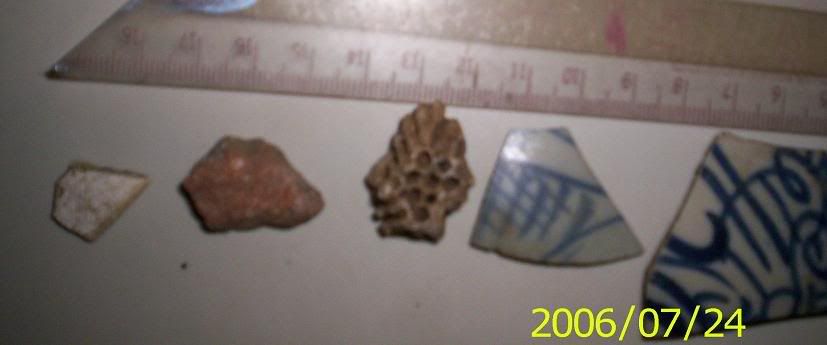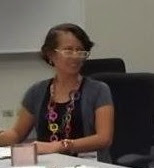Monday, July 24, 2006
I’m so thrilled to tell you I’m taking up a class this semester- History 296- Archaeological Essay about diggings and finding the real score if not the ultimate truth of long ago, by studying the earth’s crust and inner core. Actually, it’s not exactly the core we dug but mind you, we found some hidden information underneath the earth way back the Ming Dynasty, or was it?
Yeah, yeah, you must say I’m overstating it all but how would you call these:

These are from different eras of Philippine history. The blue and white porcelain was from early chinese settlers; the honeycomb-patterned stone is a coral of the sea during the Paleolithic era; the reddish-brown broken pottery item came from the early cavemen, which were used as liquid jars either for water or fruit juices; the white petite porcelain came from Europe and would one not wonder why it was here?
Anyway, Professor John Peterson from the University of Texas is handling the course. He came in all the way from the U.S.A. to help us learn more of Archaeology in M.A. History students.
The trip we had was fantastic, at least for me anyway. We climbed up more than a couple of hills up north very steep corn fields of Cansuje, a very rich agricultural municipality of Argao, and saw what ordinary eyes or shall I say- untrained sight- can’t see at first glance. Imagine stumbling all these after three or four rounds of trekking (back and forth) stepping on freshly tilled land. I guess we were color-blind at first, but after a few minutes… walllahh!
He told us, these potteries which I and some of us found, are signs that there were people living in the area a few thousand years ago, maybe for a brief moment or during a season or while the stars came out or every full moon. Whichever it was, I’m certain the stones I got were part of their lifetime experiences, which I am now holding in my lifetime.
More of our field trip:Click on the tags and off you go!
1. Digs 2. More diggings 3. The ladies and a Gentleman
4. M. A. History Group 5.undergrads 6. Up there
7. The author 8. The Gate 9. Inside 10. The pose
0 Comments:
About Ms. B

- Ms.B
- Hi! your friendly neighbor Architect who loves ART eternaly... and poetry is my PASSION!


